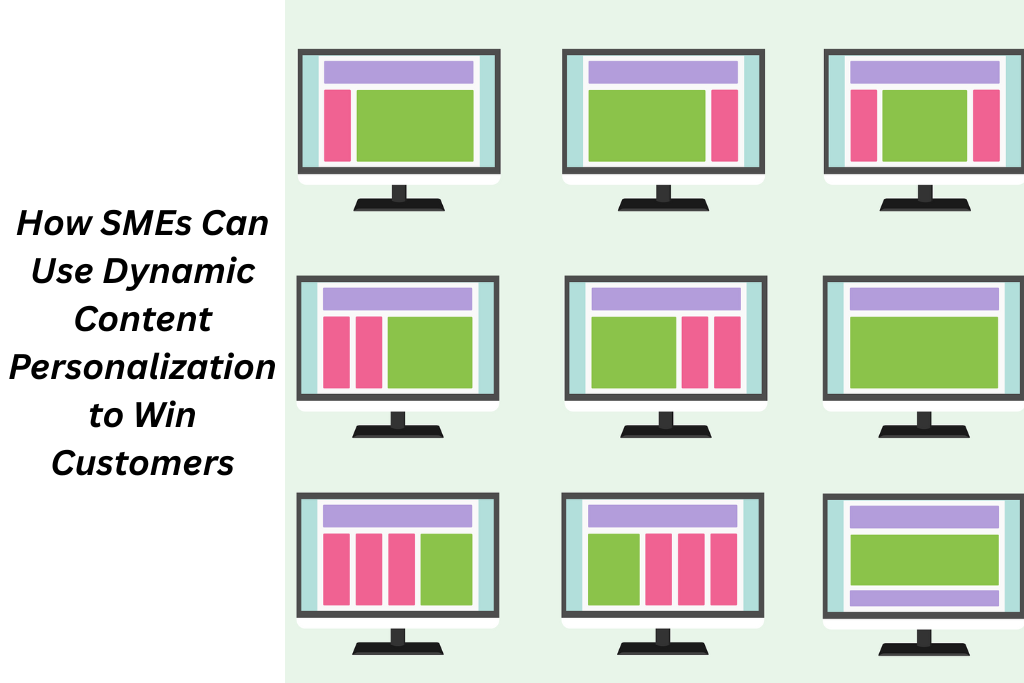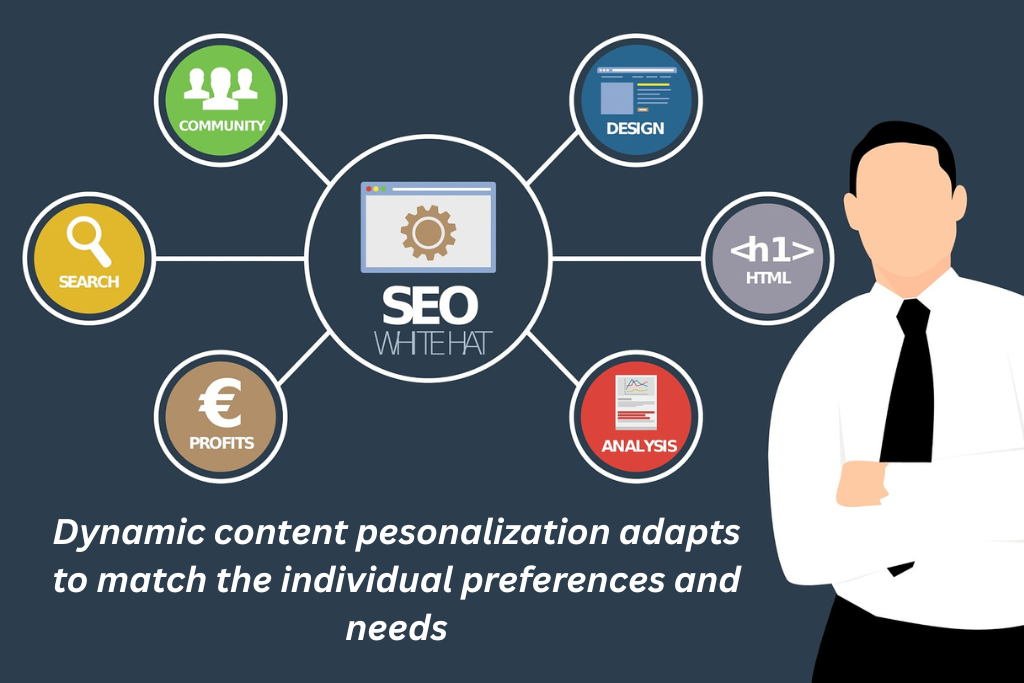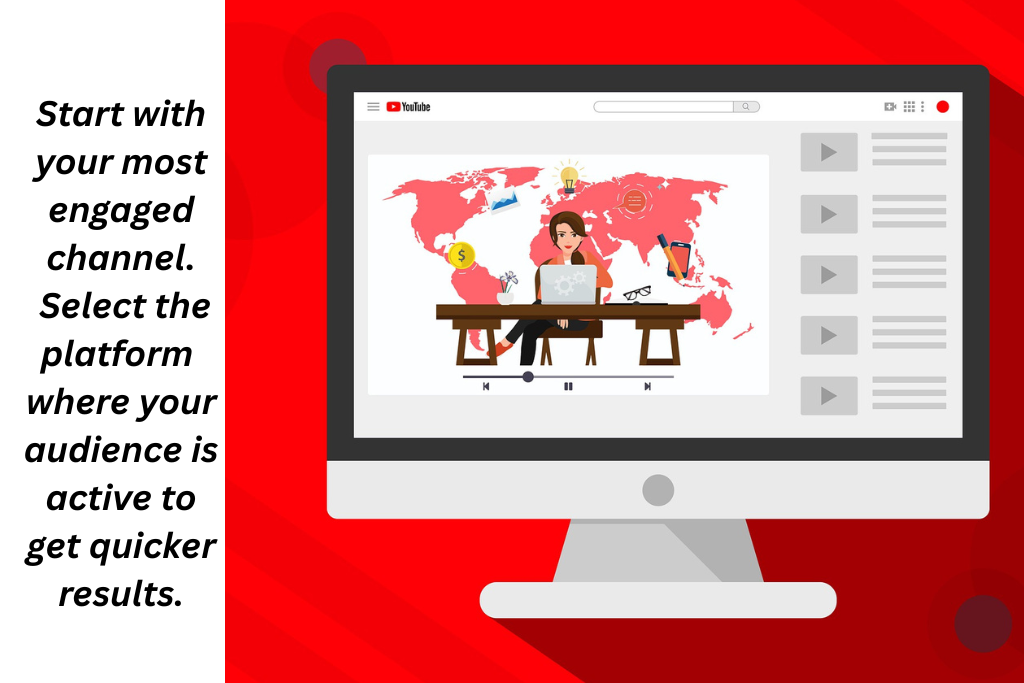
Smarter Marketing for Small Businesses: Using Dynamic Content Personalization to Win Customers
There is a difference between content personalization and dynamic content personalization. The dynamic content personalization involves tailoring your website content according to user preferences. This includes personalizing
- Website
- Emails
- Ads
This means that instead of showing users the same message, your content adapts to real-time changes based on users’ location, behavior, or past interactions. SMEs need strategic moves to stay firm in a competitive market. They don’t need a massive budget or complex systems, but dynamic content personalization to show the right message at the right time.
This approach helps them to get
- Better engagement by making people stick around longer
- Improved conversions through more clicks, signups, and sales
- Higher customer satisfaction by making them feel understood and valued
Consumers expect brands to understand their needs. That’s why a single solution is not an approach that helps. Personalization helps SMEs to compete by making every interaction feel more relevant. Being SMEs, you need to understand that personalized marketing is not just for big brands. The use of affordable tools helps SMEs to offer tailored experiences without stretching their budget.
What is Dynamic Content Personalization?
This is a process where AI automatically changes the content a user sees. These changes are based on real-time data about the user. In other words, dynamic content adapts to match the individual preferences and needs. The examples of dynamic content personalization include
- Personalize product recommendations on an e-commerce site. The site will show content based on what a visitor recently viewed or purchased.
- Location-based offers promote free shipping deals to users in a specific city.
- Customized email content changes the images and product suggestions based on the recipient’s purchase history or interests.
Key Use Cases for Dynamic Personalization in SMEs
| Email Marketing | Set up behavioral triggers and craft personalized subject lines |
| Website Experiences | Tailored content and call-to-actions |
| E-commerce Product Recommendations | Offer AI-driven suggestions based on a customer’s |
| Dynamic Pop-ups and Banners | Showing exit intent pop-ups, such as special discount offers, when the customer is about to leave |
| Chatbots and Customer Support | Provide smart and more relevant help |
Affordable Tools SMEs Can Use
SMEs don’t need enterprise-level software to deliver dynamic content experiences. They just need budget-friendly tools that make personalization simple for small businesses. These tools are
| Email Personalization Tools | Mail Chimp, Klaviyo, Brevo |
| Website Personalization Tools | Optimizely, Dynamic Yield, HubSpot CMS |
| E-commerce Tools | Shopify with apps like ReConvert and LimeSpot |
| AI and Data Platforms | Segment, RetentionX, ChatGPT API |
How SMEs Can Get Started?
You don’t need to change the entire marketing strategy for dynamic content personalization. Take small initiatives and stay focused. You will build as you go.
- Start with your most engaged channel. Select the platform where your audience is already active to get quicker results.
- Go to Google Analytics, email engagement metrics, or CRM, and use the data that you already have. This will help you personalize with purpose.
- At the beginning, keep it simple by testing just one element at a time.
- Run A/B tests to compare personalized content with your default version. Track the performance and learn what works to improve results over time.
- The key to dynamic content personalization is progress, not perfection. This process becomes more powerful the more you learn and refine along the way.

Common Mistakes to Avoid
Dynamic content personalization is powerful. However, to get the maximum outcome, do it thoughtfully. Avoid these common mistakes to ensure your efforts build trust and drive results.
- Over-Personalization Feels Creepy
Avoid overpersonalization and do not mention too many personal details. This includes the customer’s exact location or past behavior. These details can make them uncomfortable. Keep your content helpful, not invasive. It should give a hint of relevance and not surveillance.
- Ignoring Data Privacy Rules
Data privacy rules are a must to follow. Your personalized content must comply with GDPR and CCPA regulations. That’s why you should always be transparent about data use. Along with that, give users more control over their preferences.
- Avoid Dynamic Content That’s Still Generic
Personalization should go beyond surface-level or generic content. If you’re showing the same message to everyone with a first name added, it is not dynamic. Instead, you should segment your audience and tailor content based on real behavior and needs.
How to Check If This Strategy Works for You?
You need to track the right metrics and adjust based on performance. Here are key indicators to watch:
- Check the conversion rate.
- Evaluate the bounce rate.
- Track engagement time
- Measure how personalized subject lines and content affect your email performance.
Conclusion
Customers love to be understood, and with dynamic content personalization, they are more likely to repurchase. Good customer data and strategic marketing are the most important keys to dynamic content. But if you are not sure where to start? Let Ove Marketers take the guesswork out of it. From launching your website to AI-powered personalization, we handle it all. [Schedule a free consultation today]







